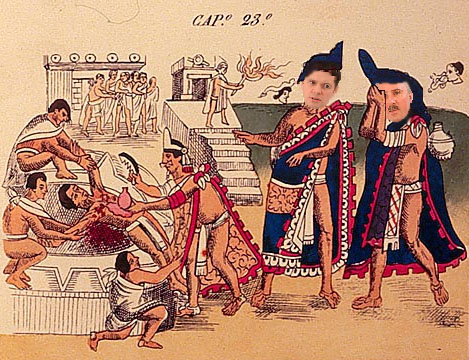

By John Helmer in Moscow
Noone can say that Alexei Mordashov (pictured left), owner of Severstal, Russia’s third largest steelmaker, and Anatoly Kruchinin, the chief executive of the Russian steel operations (right), are overdoing it when it comes to human sacrifice.
In 1487, when the Aztecs had rebuilt the Great Pyramid of Tenochtitlan after flooding, they sacrificed 80,400 people in reconsecration ceremonies over the course of four days. Mordashov’s atonement for the loss pyramid he has run up buying loss-making American steelmills as a haven for his personal capital has so far been the sacrifice of 9,500 Russian steelworkers over 11 months. This is Mordashov’s way of increasing the profitability of his Russian steel operations, in order to subsidize the losses of the American mills, and keep Severstal’s anxious bankers at bay.
The Aztecs used to offer the sacrificial victims a pacifier drug before tearing open their chests, extracting their hearts, and chopping off their limbs. It isn’t clear what Mordashov is handing out, for his accountants have reported no increase in the company’s retirement benefit liabilities (see below). So far not a single Russian steelworker or union representative has complained. Prime Minister Vladimir Putin, who came to the rescue of protesting steelworkers in the Primorsk region of the Russian fareast in April, hasn’t done anything yet for the gentlefolk of Cherepovets, in the Vologda region of the Urals, where Mordashov’s lead mill is located. And when the head of Russia’s steelworkers union had his chance to speak up, at the meeting Putin held to deal with the Pikalyevo protests in June, Tarasenko said nothing at all, as this transcript from the Prime Minister’s office reveals: http://www.premier.gov.ru/eng/pda/visits/ru/111/2995.html
The trade union representing Russian steelworkers is the Mining-Metallurgical Trade Union of Russia (GPMR). In an interview today, Tarasenko, the union’s chairman, confirmed that 9,500 jobs have been cut at Severstal’s Russian steel operations. The number was corroborated by Olga Yezhova, spokesman for the mill at Cherepovets. “The number is definite and final, ” she said. “There will be dismissals until the end of the year, but they are already included into this figure.” She explains the cuts as due to the “optimisation of the working process”. She was using the phrase Kruchinin gave yesterday, when speaking to a Russian wire service: “We have conducted a big optimisation in the Russian divisions of Severstal, in particular, at the Cherepovets plant.”
According to Tarasenko, the 9,500 workers cut include not only steelworkers, but also lower-level managers. At Cherepovets, he told CRU Steel News, the number of dismissals is 5,900. “Some were dismissed, some left by their free will”, Tarasenko claims. “Severstal has always been a problem company, but in this case all dismissals were carried out after thorough cooperation with the trade union. There were a number of conditions under which workers could not be dismissed. We received all the lists, we negotiated with Severstal. Everything went calmly. There weren’t any strikes.”
Tarasenko was asked how the Russian steelworkers union has approached the problem of job cuts differently from the US steelWorkers Union. “In the USA, as far as I know, Severstal is losing a lot more money than in Russia. I believe Russian and American trade unions use the same approaches. I don’t know what’s currently going on at that plant in Baltimore, but there is another metallurgical plant there [Warren, Ohio], and it was shut down completely. Many American workers have lost their jobs.”
The American steelworkers aren’t relaxing on Mordashov’s weed with Tarasenko’s alacrity. John Cirri, president of United Steelworkers Local 9477 in Baltimore was reported last week by the Baltimore Sun as saying that he had received a Severstal memorandum in September, proposing a plan to cut up to 580 jobs from the Sparrows Point mill payroll of 2,500. This, Cirri said, was one of several options for restructuring, including reductions, retirements or transfers to other departments. “I don’t know what the future is going to hold because things change from week to week,” Cirri is reported to have said. “Whatever happens, the union will do things in the most humane way possible to guarantee that there’s a long-term future at Sparrows Point.” Severstal, which bought Sparrows Point last year in an $810 million deal, said through a US spokesman, Bette Kovach, that the company is still deciding whether to eliminate jobs and how it will restructure Severstal North America. Cirri also said that any decision Severstal makes on job losses at Sparrows Point would have to be negotiated with the union.
Two of Severstal’s US plants have been idled – Warren, Ohio, and Wheeling, West Virginia. In addition to Sparrows Point, Severstal North America also includes plants in Dearborn, Michigan, and Columbus, Mississippi.
Currently, Severstal is Russia’s largest steel producer on a consolidated basis, with 26 million tonnes (mt) of crude steel production capacity. It has 11mt of capacity in Russia, 11mt in the US and 4mt in the European Union (EU). At its core Russian operations, the company produces mostly flat products, with a high proportion of value-added products such as automotive sheet and large-diameter pipe. The US operations specialise in automotive flats, while the EU operations focus on specialty longs.
A report by Renaissaince Capital, issued Monday, says that Severstal continues to lose money on its North American operations “at a significant pace. The cash cost on Severstal’s North American sites of $570-590/tonne for HRB exceeds industry averages in the US, and barely enables the operations to break even under current price levels. In our view, Severstal needs a fundamental restructuring of its North American operations, as a spin-off of the assets will not cover any reasonable part of the acquisition price.” By spin-off, the Renaissance Capital steel analyst, Boris Krasnojenov, a share promoter, is referring euphemistically to sell-off. After months of trying, Mordashov either cannot sell, or won’t at the distress prices last year’s haven assets are now worth.
According to Cirri, the local union leader, Sparrows Point is currently making about 8,000 tons (US) of liquid iron a day. It has the capacity to make 10,000 to 10,500 tons, he said.
In Russia, by contrast, Severstalreports that its steel operations have operated at 100% utilisation since August, on what it believes to be improving demand for its products. The last Severstal performance report, issued on September 7, claimed that cost cutting has been effective in lifting the profitability of the Russian steel division. “After a very challenging Q1, the benefits of cost savings initiatives and improving global market conditions led to improved Group performance in Q2,” the company said.
The unaudited group figures for cost of sales in the first half of this year indicate a reduction of 28% to $5.4 billion, group-wide. The financial report does not provide a breakdown of cost-of-sales data for the Russian steel division and the North American steel division. However, the Russian operations reported a profit inthe first half of $187 million; compared with a loss at Severstal North America in the same period of $631 million. Lucchini, Severstal’s western European steel division, lost $271 million in the same period. The company claims that its Russian asset base is now worth a total of $13 billion, 67% of the group total. By comparison, the asset value of Severstal North America, having collapsed after Mordashov had paid premiums for their acquisition, is now at $5.5 billion, just 28% of his group’s value.
More than two-thirds of the job losses across the group have been taken at the Russian steel division — without a concomitant increase in layoff or retirement liabilities. The company report of September 7 also reveals that there has been no increase in retirement liabilities for the group. As of June 30 last, retirement benefit liabilities totaled $761.8 million. A year earlier, before the crash, the company said its retirement liabilities amounted to $779.3 million.
According to Severstal’s owner,the sacrifice his workers have been obliged to make has been good for him. “With our very competitive cost structure in Russia, on-going cost saving and rationalisation programmes in our North American and European operations and solid financial position, we have a strong platform from which to compete in our core markets,” Mordashov commented in the company’s September 7 report. The view from his counting-house at that time indicated a 148% increase in Severstal’s share price since the year began. With an 82.37% stake in the company, Mordashov can count the gain in his personal wealth of $3,953,760,000. That adds up to $416.2 million for every Russian steelworker Mordashov has dismissed.
Notwithstanding, a report by Renaissance Capital, issued today, indicates skepticism that job cuts will be able save Mordashov’s bottom-line from his banks. “Payroll represents, on average, 10% of the cost structure at Russian steel mills, so the announced headcount reduction at Severstal may only result in an incremental improvement in the company’s efficiency. In general, the major units of the Russian steel mills, including rolling, blast-furnace and BOF divisions, are not significantly more labour-intensive than those of their foreign peers. Taking into account the 100% utilisation rate, we assume significant reductions in various support services which can be separated and sub-contracted (including medical services and catering). As we have noted previously, the crisis environment has provided an opportunity for the Russian mills to optimise their business models.”
Severstal’s share price lost almost 2% in Monday’s Moscow trading.


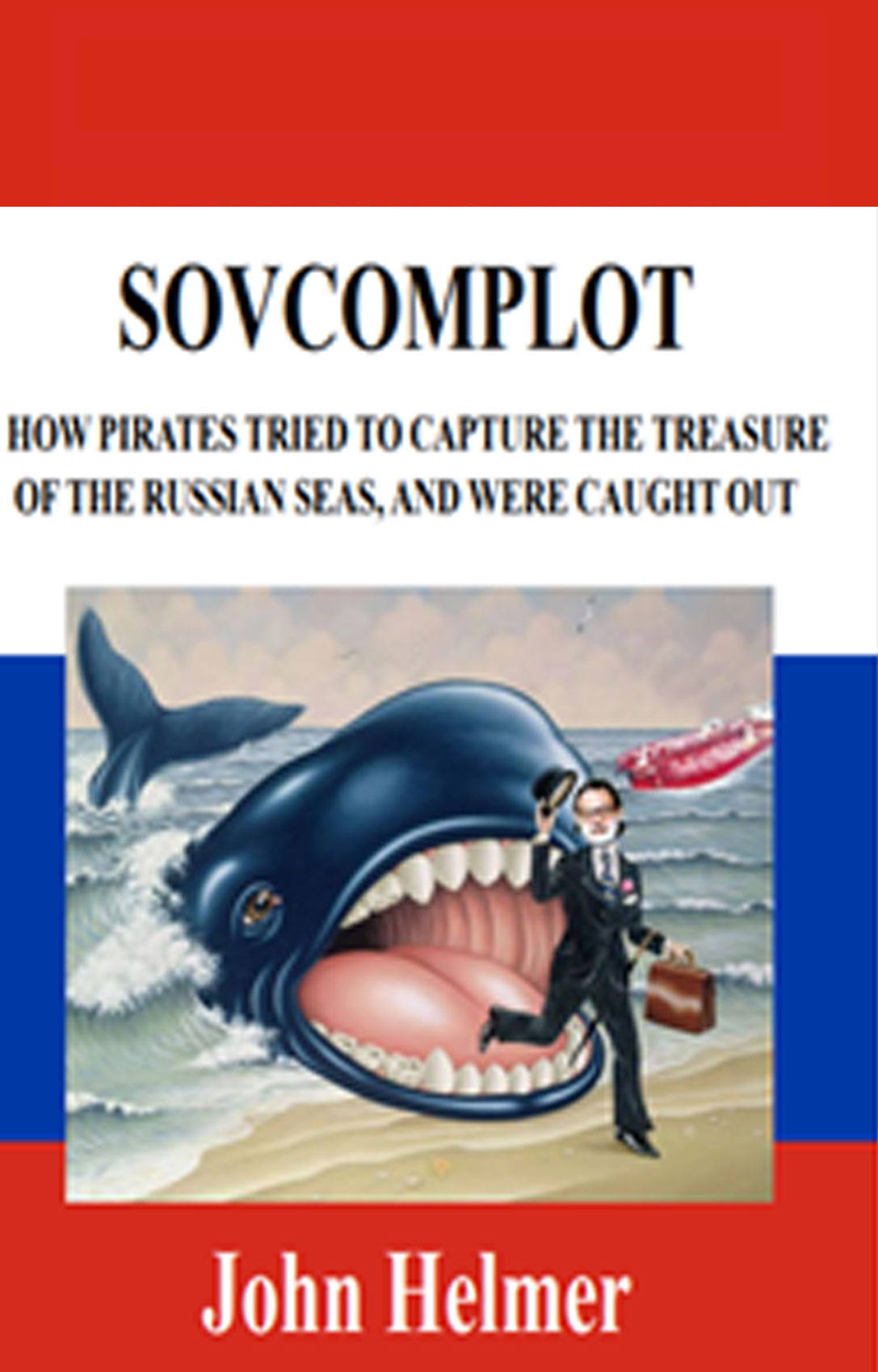

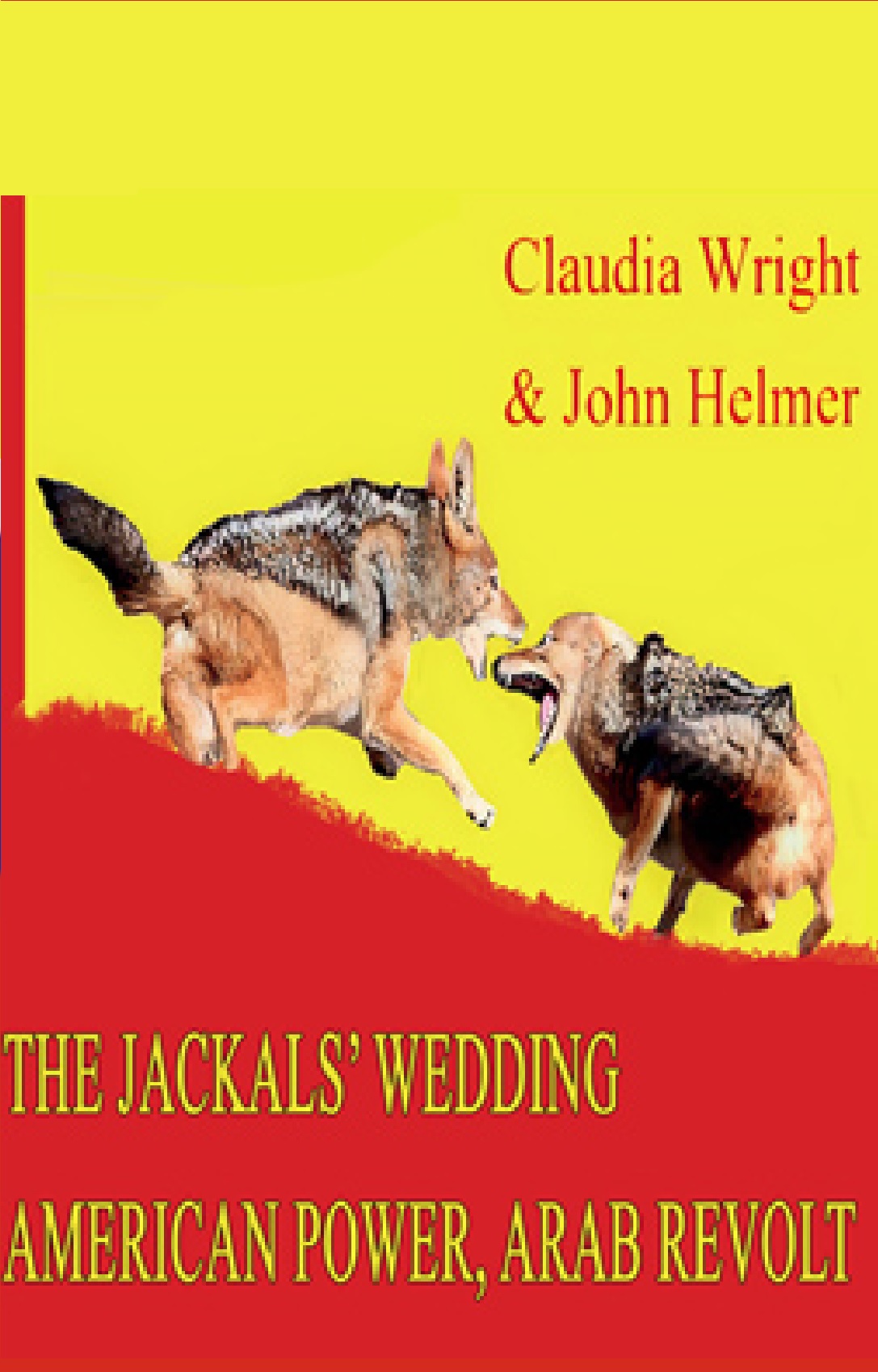

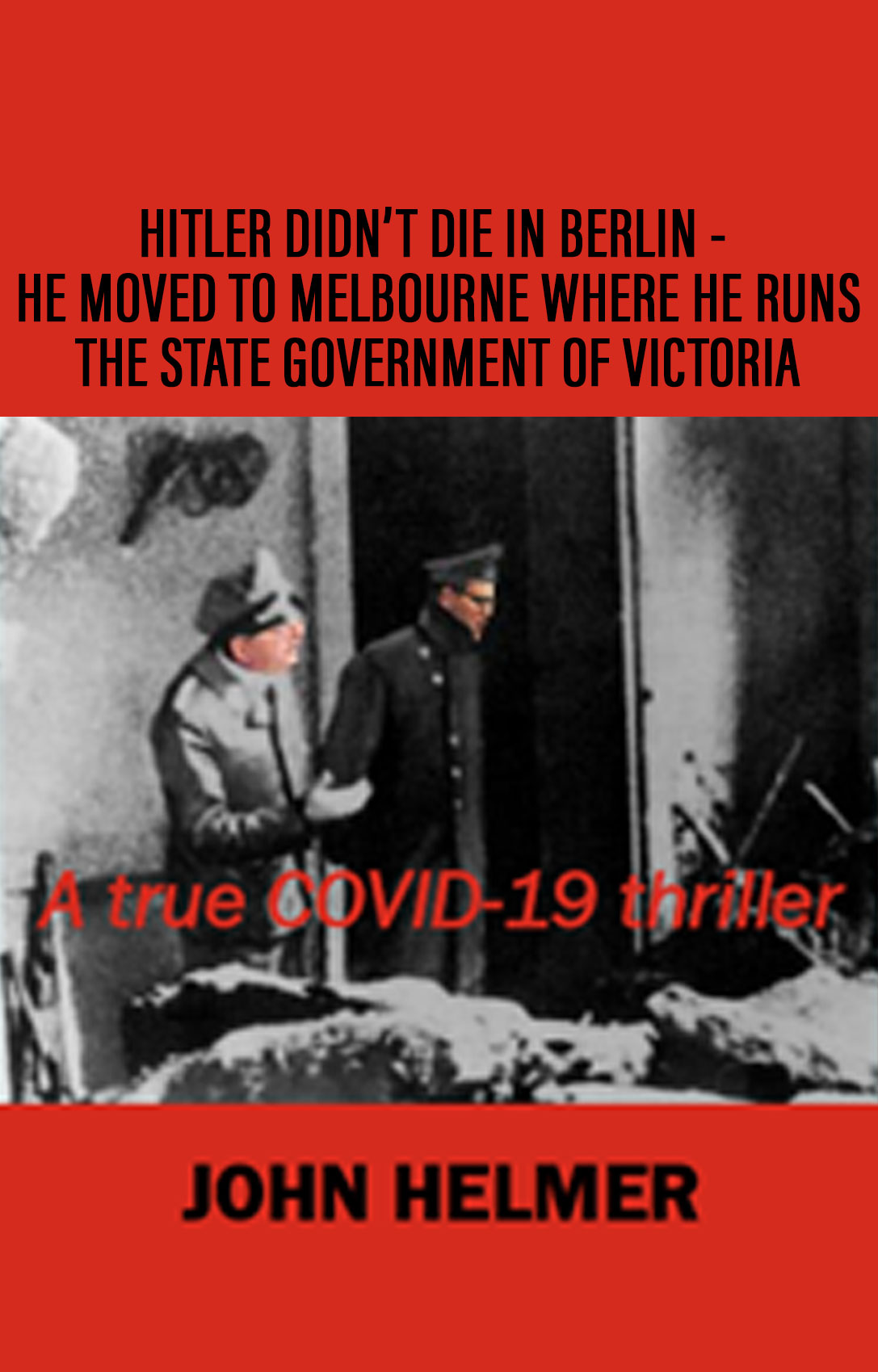
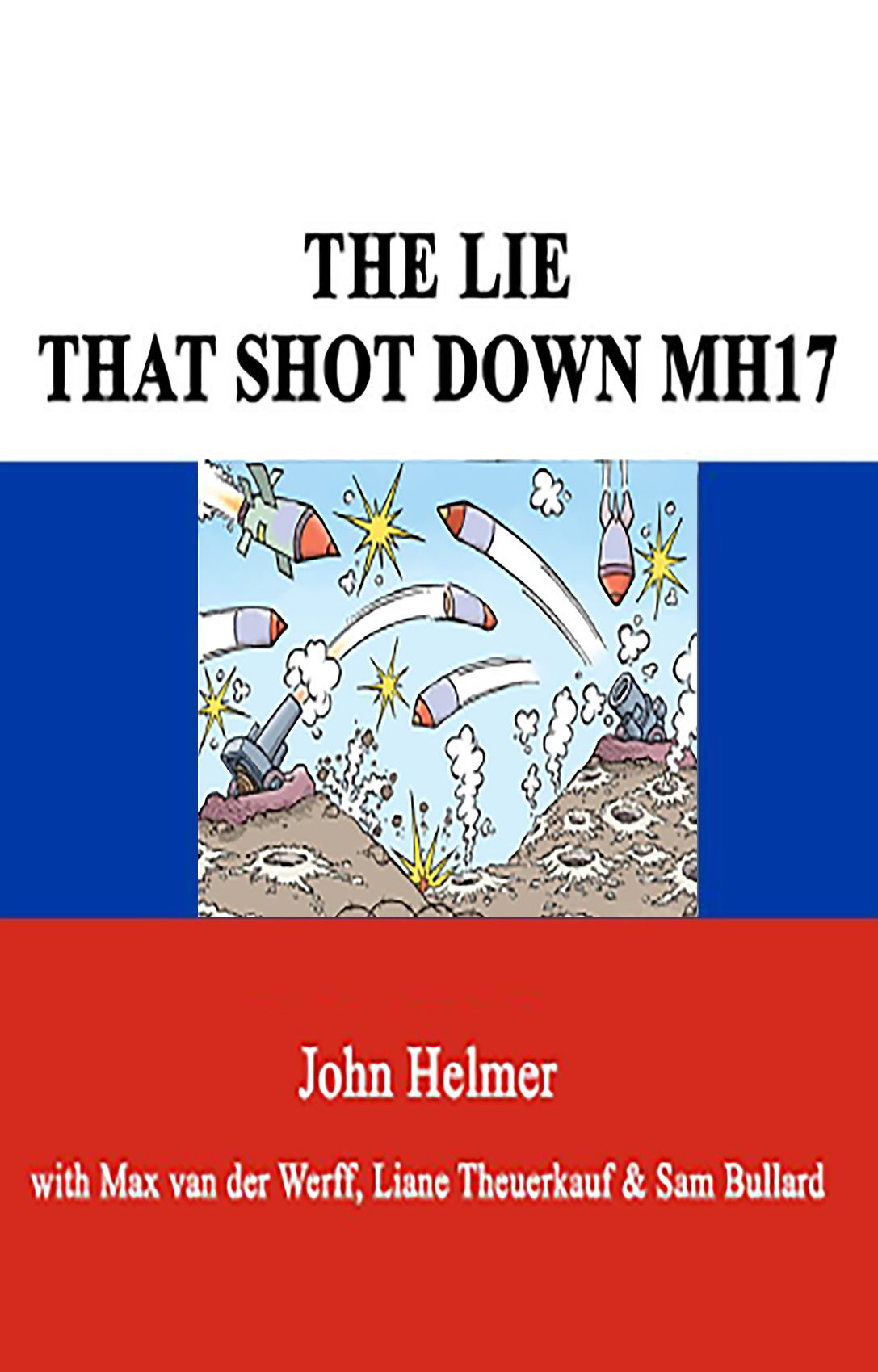
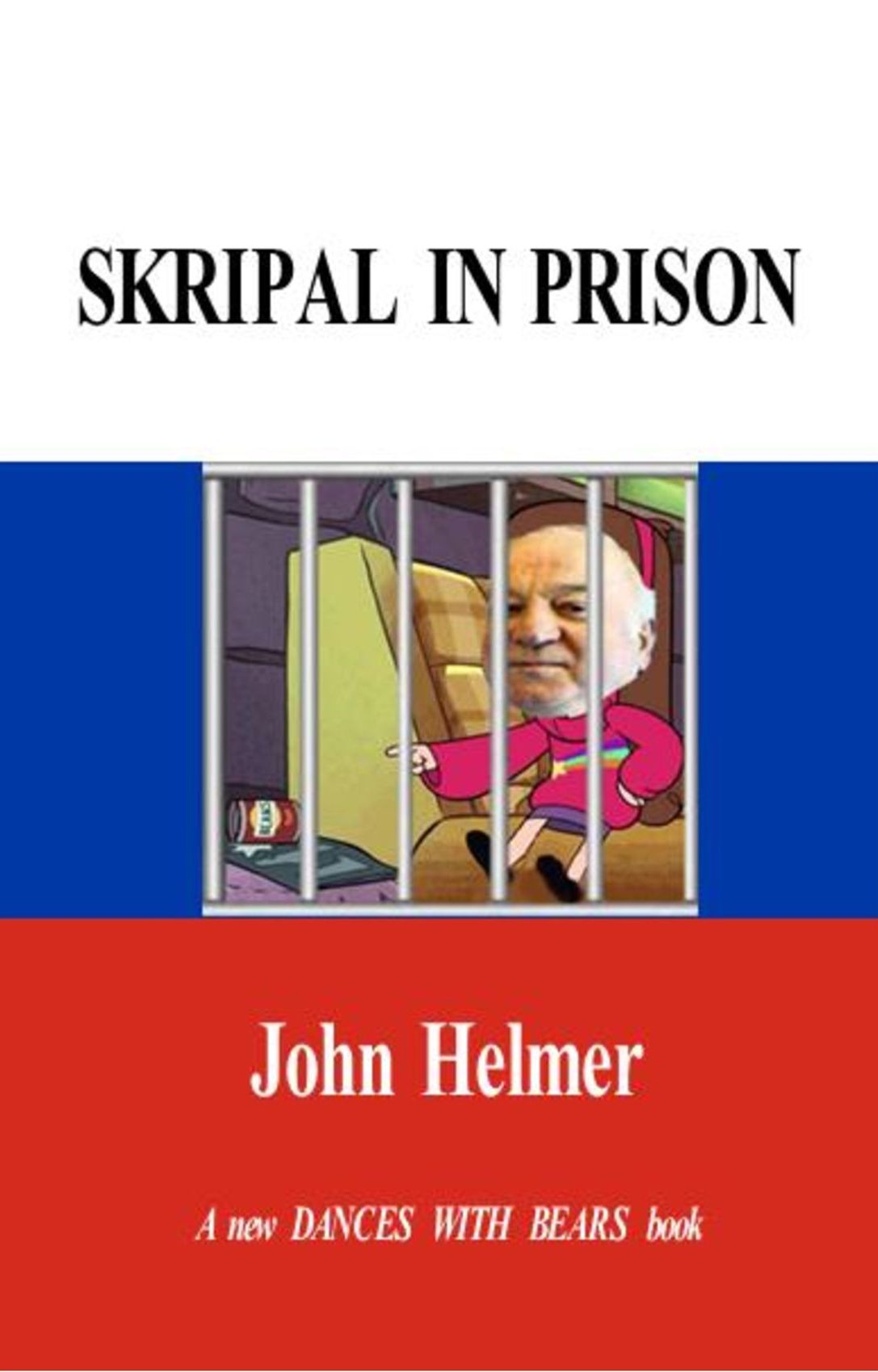
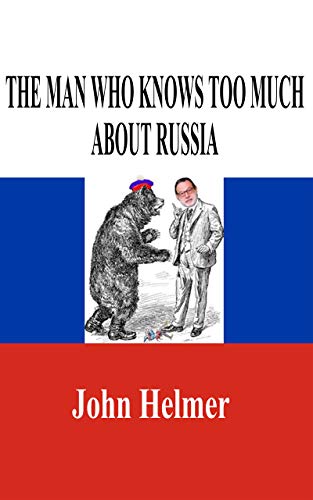

Leave a Reply